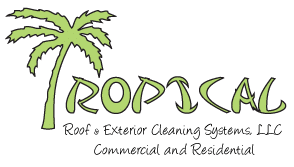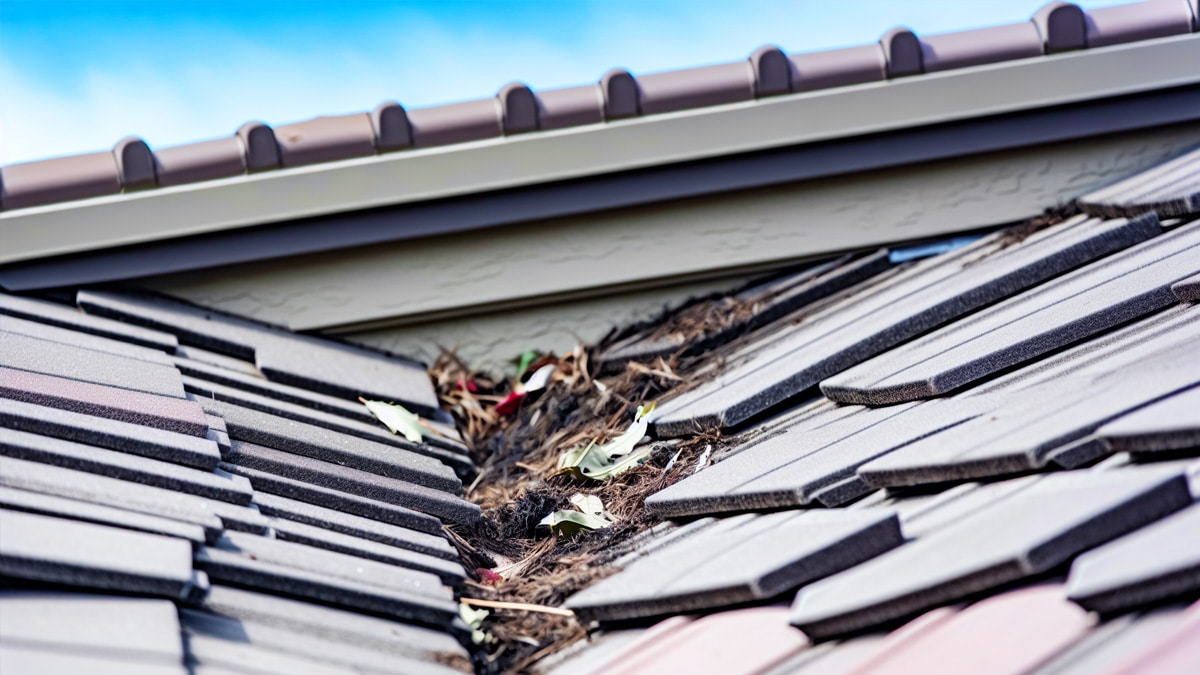Think you’ve cleaned your roof well? Guess again – some sneaky spots can escape your notice. This article zeroes in on the overlooked areas during roof cleaning, from those shady valley flashings to neglected attic vents. Tag along as we reveal these hidden culprits, helping you sidestep the costly aftermath of an incomplete clean.
Areas People Often Miss When Cleaning A Roof
It’s crucial to clean often-overlooked areas of the roof such as valley flashings, areas behind skylights, and around pipe boots and vent covers to prevent damage and costly repairs.
Gutters and downspouts must be regularly cleaned to ensure effective water drainage and prevent water damage to the roof and home structure, particularly at junction points where clogs frequently occur.
Hire for seasonal roof cleaning and maintenance are essential for enhancing property appearance, preventing damage, and prolonging the durability of the roof, with professional assistance recommended for a comprehensive job.
Hidden Culprits: Overlooked Spots in Roof Cleaning
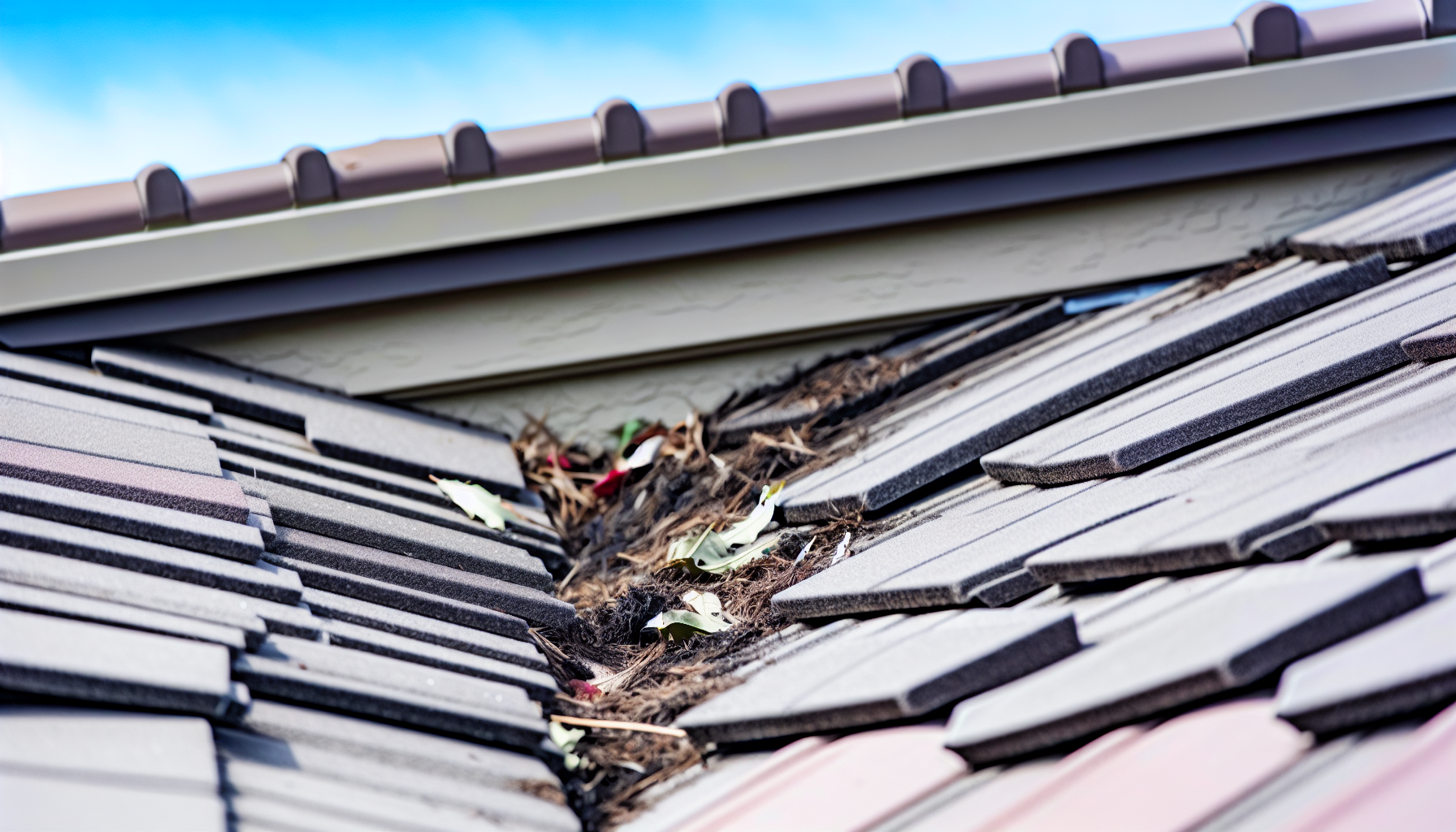
When we consider roof cleaning, we often think about the obvious – the shingles, the gutters, the tiles. But let’s not forget those hidden nooks and crannies on the roof’s surface that tend to accumulate dirt and debris, often unnoticed. Eaves, flashings, and soffits are just a few of the spots that can harbor organic growth such as algae, moss, and lichen, leading to unsightly stains and potential damage over time.
These overlooked areas require as much attention as the more visible parts of your roof. Ignoring them can lead to costly repairs in the long run. So, let’s delve into these hidden culprits and how to deal with them effectively.
● Valley Flashings: Where Debris Loves to Hide
Valley flashings, those protective materials that shield the valley or intersection of your roof slopes, are often overlooked during roof cleaning. Constructed typically from metal, these flashings guide rainwater away from the roof, keeping your home dry and safe. But what happens when they get clogged with debris?
Debris accumulation in valley flashings can obstruct the flow of water, leading to seepage through your roof, especially if you have asphalt shingle roofs. Hence, regular clearing of valley gutters, sweeping the valley, and addressing any significant buildup using mildly acidic substances like vinegar or lemon juice is necessary.
● Behind Skylights: The Unseen Algae Nursery
Skylights are a beautiful addition to any home, allowing natural light to flood into your rooms. However, the area behind these skylights often becomes a breeding ground for algae. Why does this happen? The metal flashing below the window inhibits algae growth directly underneath it, creating a conducive environment for algae on the surrounding roofing materials.
Algae can cause significant damage to your roofing materials. It consumes the limestone in asphalt shingles, leading to deterioration of their structural integrity. Additionally, algae can leave permanent stains and retain moisture, accelerating shingle degradation and promoting rot. Thus, regular inspection of areas around and behind skylights during roof cleaning is critical.
● Pipe Boots and Vent Covers: Small but Significant
While they may seem insignificant, pipe boots, and vent covers play a crucial role in roof maintenance. These components act as flashings around the base of pipes protruding from the roof, providing waterproofing and preventing water intrusion.
Using a brush or pipe cleaner efficiently removes any dirt, debris, or blockages from pipe boots and vent covers. Regular cleaning of these components, especially in flat roofs, can prevent water pooling and potential damage.
Essential Yet Ignored: Gutter Interiors and Downspouts
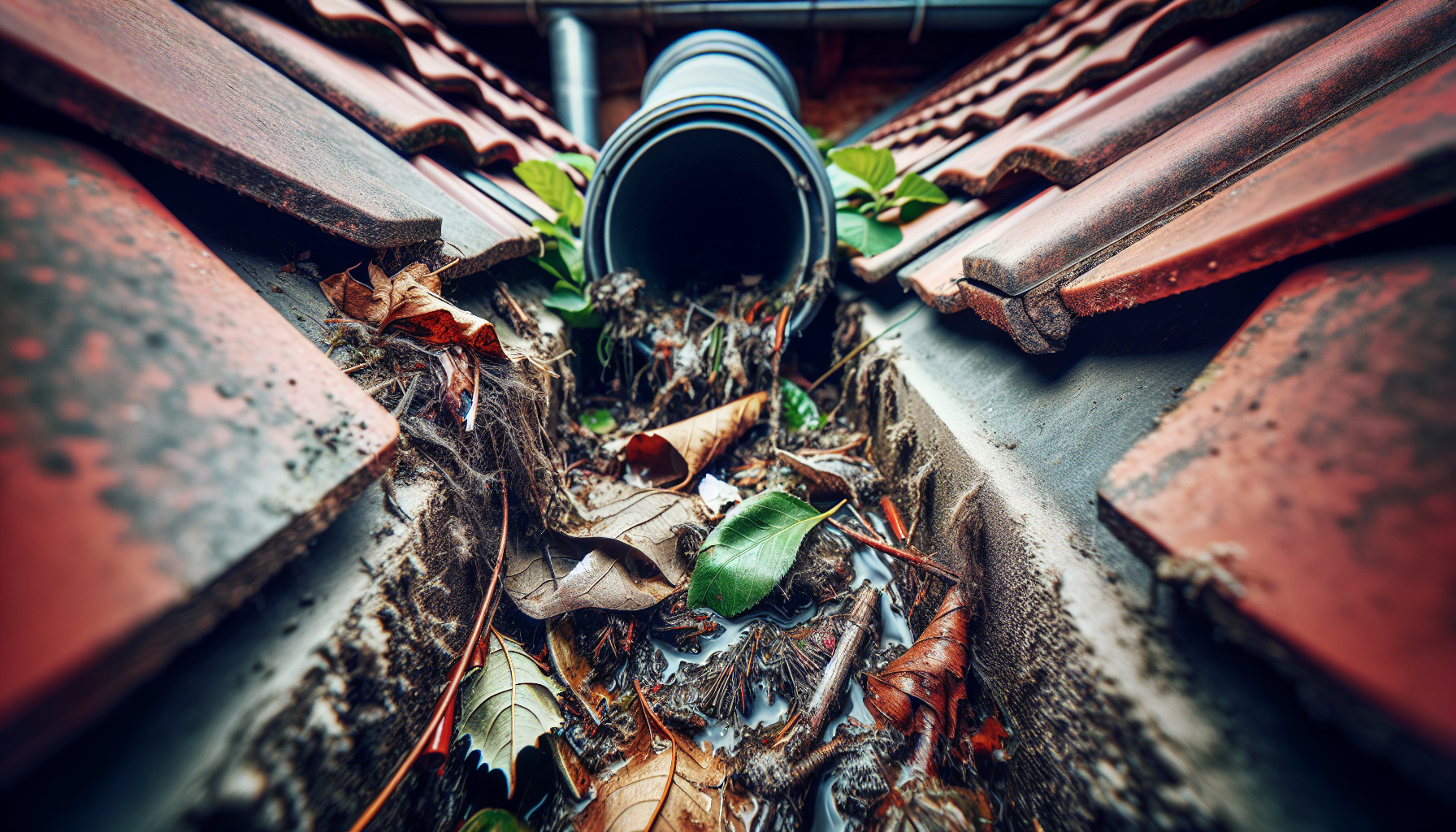
Gutters and downspouts are your roof’s drainage system, directing rainwater away from your home. Yet, they are often neglected during roof cleaning. Clogs resulting from the accumulation of debris such as leaves, twigs, and dirt, can inhibit their function, leading to water damage and undermining the integrity of your roof.
Ideally, gutter cleaning and downspout maintenance should be part of our spring cleaning ritual, preparing for the rainy season. Here are the tools you’ll need for this task:
- A ladder
- A bucket
- A gutter scoop or garden trowel
- Heavy-duty work gloves
● The Junction Points: Where Clogs Happen
Junction points in gutters are where the gutters meet the downspouts. These are common spots for clogs, which can cause water damage if left untreated. Signs of blocked junction points include water pooling or overflowing from the downspout connection and sagging gutters.
An effective cleaning of clogged junction points involves the following steps:
- Clean the gutters.
- Clean the bottom opening of the downspout.
- Rinse out the downspout from the top.
- Use a plumber’s drain snake or auger to break up tougher clogs if necessary.
● Downspout Dilemmas: Ensuring Clear Pathways
Downspouts play a pivotal role in diverting rainwater away from your home. However, they can become obstructed by various types of debris, causing water to overflow and potentially damage your home’s foundation. Aside from regular cleaning, installing gutter guards and adding downspout extensions can help prevent blockages.
Specialized tools like gutter downspout snakes and handheld drum augers are designed to help remove leaves, branches, and other debris from downspouts, ensuring a clear pathway for water.
The Overhangs and Eaves: A Refuge for Pests and Rot
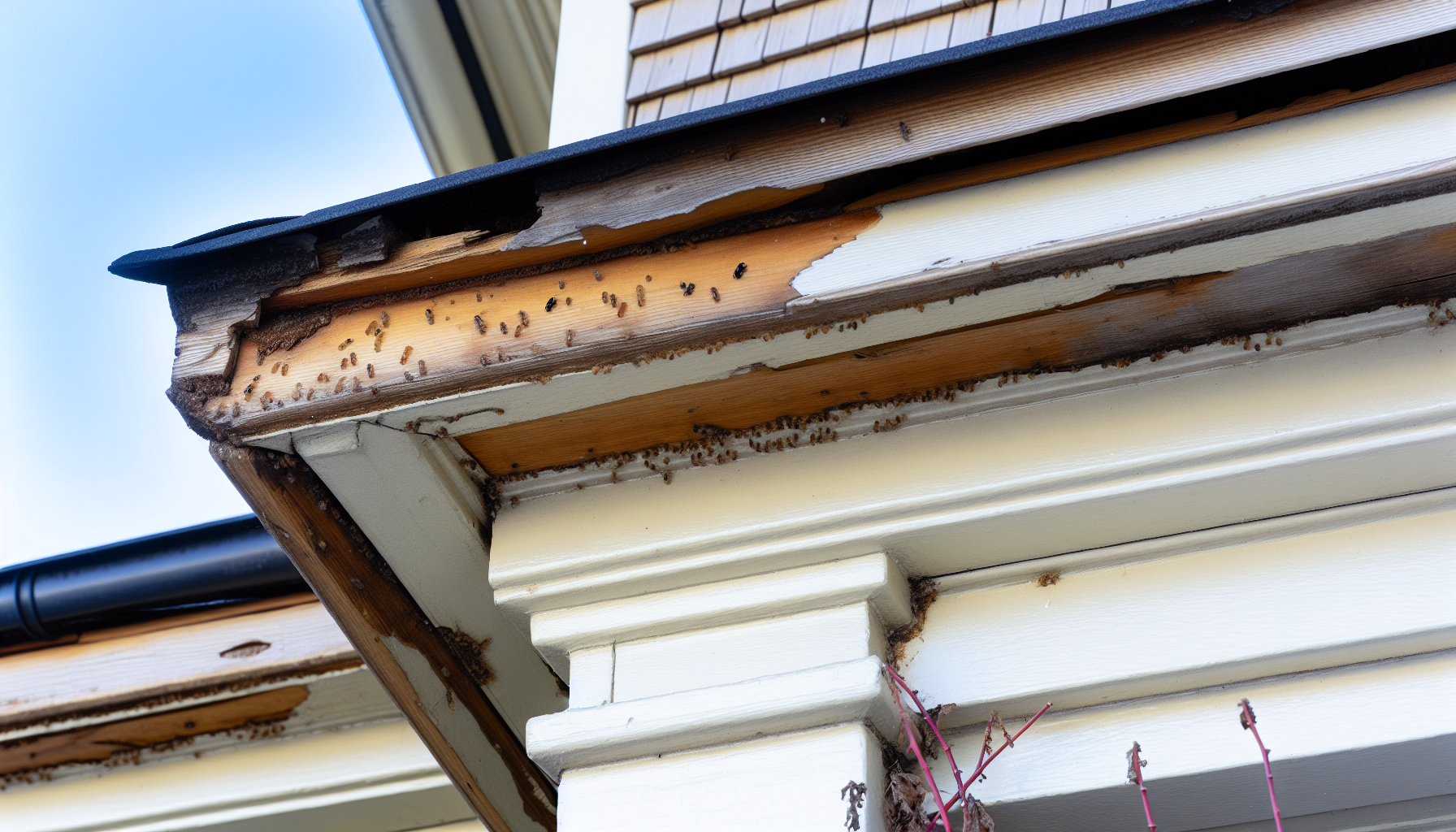
Roof overhangs and eaves aren’t just architectural elements for aesthetics – they also protect your home from the elements. However, these areas can become a refuge for pests and rot if not properly cleaned and maintained. Some common pests that are commonly found in these areas include:
- Rodents
- Insects such as termites, carpenter ants, and bees
- Wasps
- Spiders
It is important to regularly clean and maintain these areas to prevent pest infestations and rot.
Regular roof cleaning can help keep these pests at bay. Look out for signs of infestation such as peeling paint, cracks, stains, leaks, and constant moisture causing rot in wood.
The Chimney’s Forgotten Sides: A Haven for Moss and Algae
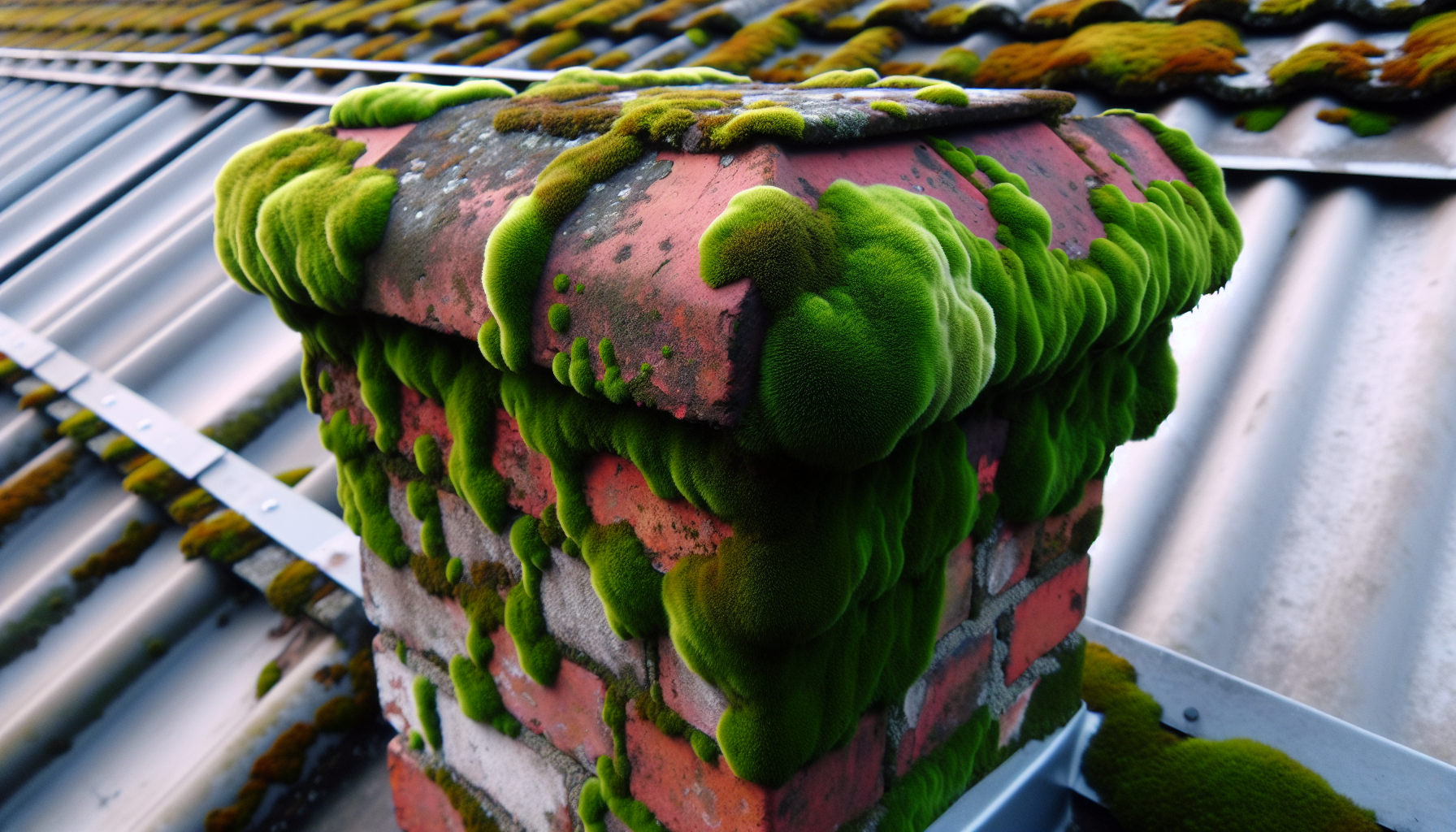
When cleaning your roof, don’t forget the chimney. The sides of the chimney are often neglected, leading to moss and algae growth that can damage the structure.
Here are some tips for cleaning your chimney:
- Use a stiff brush to scrub away any moss or algae.
- Rinse the chimney with a hose to remove any remaining debris.
- Consider applying a moss and algae inhibitor to prevent future growth.
By regularly cleaning and maintaining your chimney, you can prevent damage and ensure its longevity.
Regular cleaning can help prevent this growth, keeping your chimney in top condition. You can apply chemical herbicides, use a solution of dishwasher soap and water, or spray cleaners like Wet & Forget to remove moss and algae.
Attic Vents and Insulation: Ensuring Proper Airflow
While cleaning your roof, don’t forget about the attic. Attic vents and insulation play a crucial role in maintaining proper airflow and preventing moisture buildup in your home by helping to trap moisture.
Blocked attic vents can obstruct airflow, leading to increased energy costs and potential damage. Regular inspection and cleaning of these vents are necessary to ensure they are unobstructed.
● Attic Vent Blockages: Hidden Barriers to Airflow
Blocked attic vents are not just an inconvenience – they can also increase your energy bills. Without proper ventilation, heat can build up in the attic during summer, forcing your air conditioning system to work harder and leading to higher energy costs.
Routine cleaning and inspection of attic vents aid in preventing blockages, contributing to a healthier and more energy-efficient home.
● Insulation Integrity: Keeping Moisture Out
Aside from vents, the insulation in your attic also plays a crucial role in maintaining your home’s energy efficiency. Insulation acts as a barrier against condensation, preventing moisture from entering or escaping and aiding in preventing air leakage.
However, moisture can have several adverse effects on your insulation. It can lead to:
- Structural damage
- Decreased insulation efficiency
- Mold and mildew growth
- Potential health concerns for the building occupants
Routine inspections aid in preserving the integrity of your insulation, preventing moisture intrusion, and maintaining your home’s energy efficiency.
Underneath It All: The Importance of Soft Washing
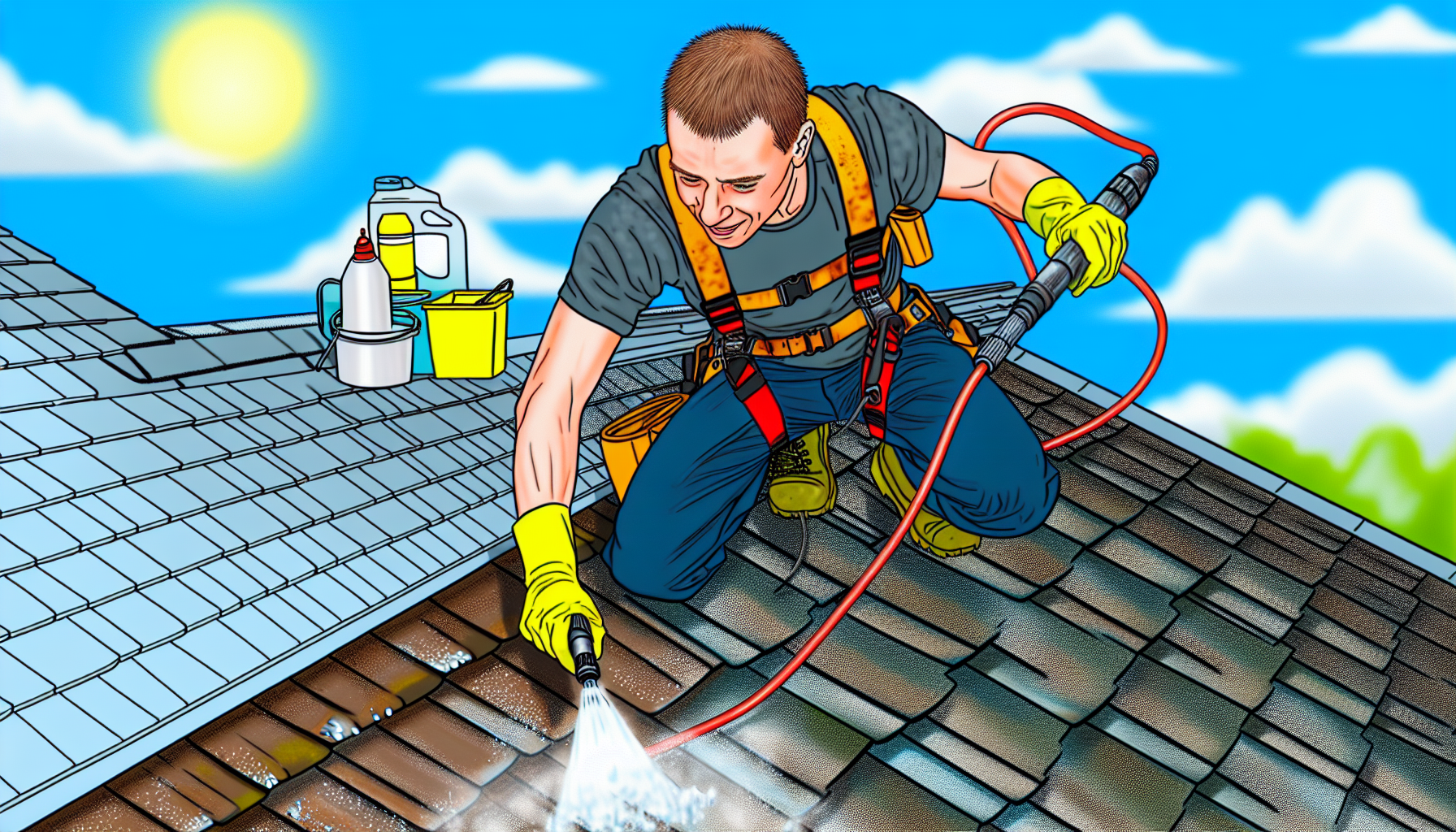
When it comes to cleaning your roof, more doesn’t always mean better. High-pressure washing, for instance, can cause damage to the roofing tiles or siding. So, what’s the alternative? Enter soft washing – a method that uses low-pressure washing and specialized chemicals to efficiently clean roofs and eliminate substances like mold, mildew, and algae.
Soft washing not only efficiently eliminates dirt and debris but also minimizes the risk of damage to your roof. It’s an appropriate method for all types of roofing materials and requires a few essential tools like a pressure washing machine, a chemical pump and sprayer, and a soft washing solution.
The Case for Professional Roofing Contractor Assistance
Although homeowners can handle some roof cleaning tasks, enlisting the services of a professional roofing contractor guarantees a comprehensive job. Professional contractors have extensive experience and comprehensive understanding of different roofing systems, making them well equipped to detect potential issues in a roof.
Utilizing professional roof cleaning services offers several benefits, including:
- Preventing costly damages, such as leaks and wood rot
- Periodic maintenance by a certified professional aids in identifying potential issues before they escalate into costly repairs
- Cost-effective in the long run
Seasonal Considerations: When to Clean Your Roof
Similar to how we change our wardrobes with the seasons, our roofs also require seasonal care. Cleaning your roof in preparation for summer can:
- Enhance the overall appearance of your property
- Boost its market value
- Prolong the longevity of the roof
- Minimize potential damage from winter conditions.
As the fall season approaches, homeowners should remain vigilant for potential issues such as:
- visible debris or tree damage
- blocked gutters
- storm and wind damage
- roof flashing failure
Routine roof maintenance addresses these issues, ensuring a clean roof that is prepared to withstand any storm. By inspecting your roof regularly, you can maintain its cleanliness and durability.
Summary
A clean roof is more than just an aesthetic choice; it’s an investment in your home’s longevity. Neglecting roof cleaning can lead to costly repairs and even compromise your home’s structural integrity. From valley flashings and skylights to gutter interiors and downspouts, each part of your roof deserves attention. Regular roof cleaning, whether done by homeowners or professional contractors, can help maintain your roof’s integrity, enhance your home’s curb appeal, and even contribute to energy efficiency. So, don’t overlook your roof – it’s your home’s first line of defense against the elements.
Frequently Asked Questions
What are the cons of roof cleaning?
Cleaning the roof too aggressively can cause damage, strip granules off shingles, and crack roof tiles, potentially voiding the roof’s warranty. Be cautious when deciding how to clean your roof.
What is the best practice for cleaning a roof?
The best practice for cleaning a roof is to use a 50:50 mix of water and bleach applied with a garden sprayer, allowing it to sit for 15-20 minutes before rinsing with a low-pressure hose. Avoid using a pressure washer as it can damage the shingles.
How do professionals clean roofs?
Professionals clean roofs using either pressure washing or soft washing, depending on the type of roofing materials being cleaned. Pressure washing uses highly pressurized water, while soft washing is more suitable for delicate materials like shingles.
Does roof cleaning damage shingles?
Using bleach with an appropriate water ratio will not damage asphalt shingles during roof cleaning. Avoid high powered pressure nozzles, as they can compromise the shingles’ integrity and cause granule shedding.
Why is regular roof cleaning important?
Regular roof cleaning is important because it helps prevent costly damages like leaks and wood rot, and maintains the aesthetic appeal of your property. It is crucial for the longevity of your roof and your home’s overall health.
